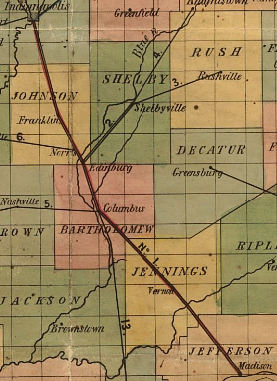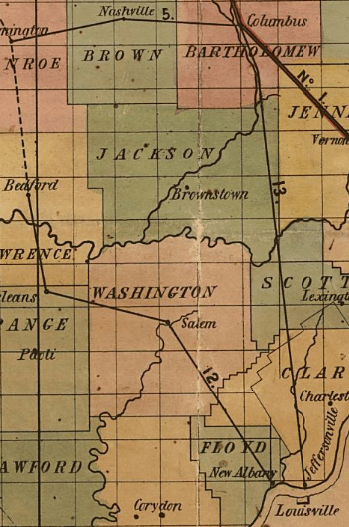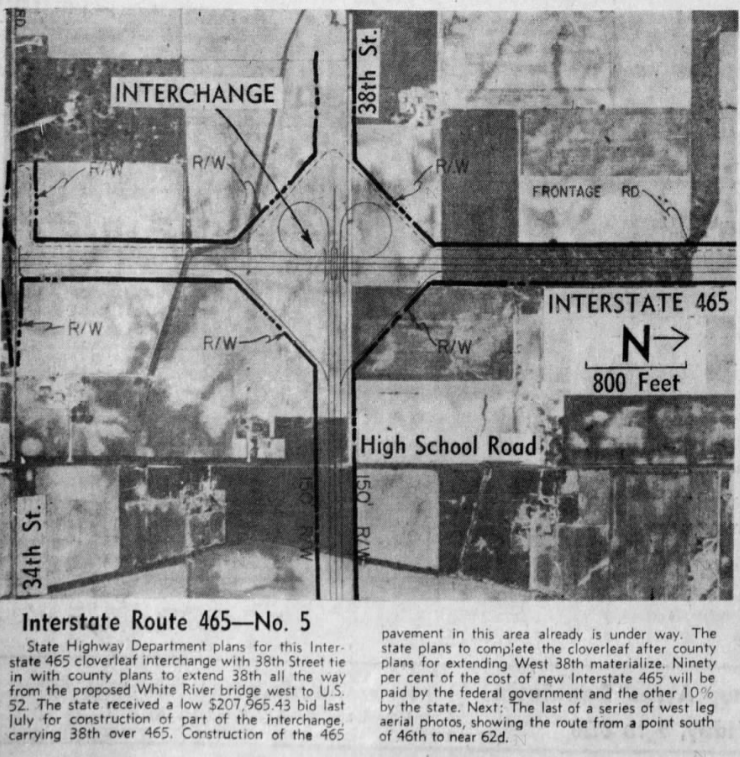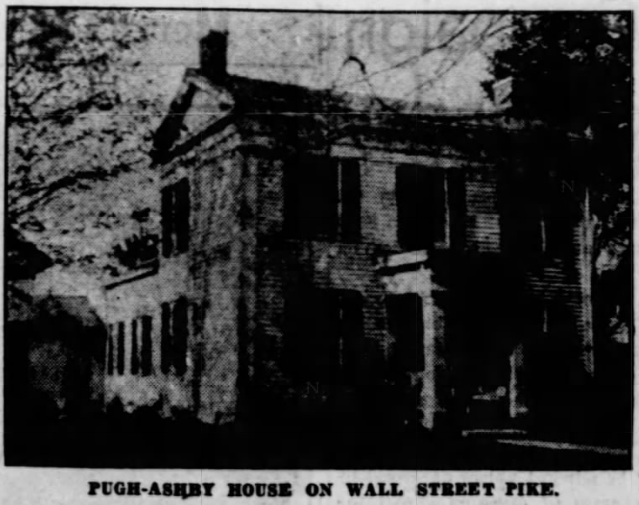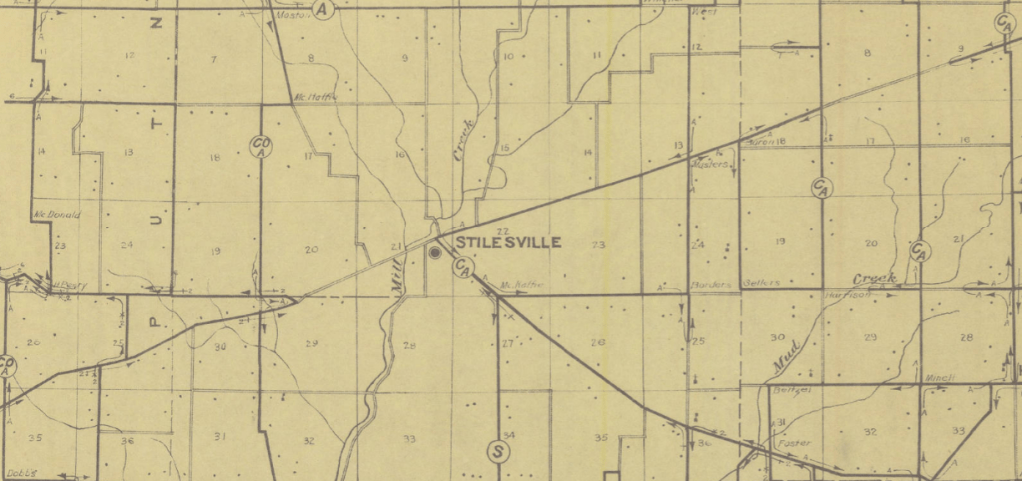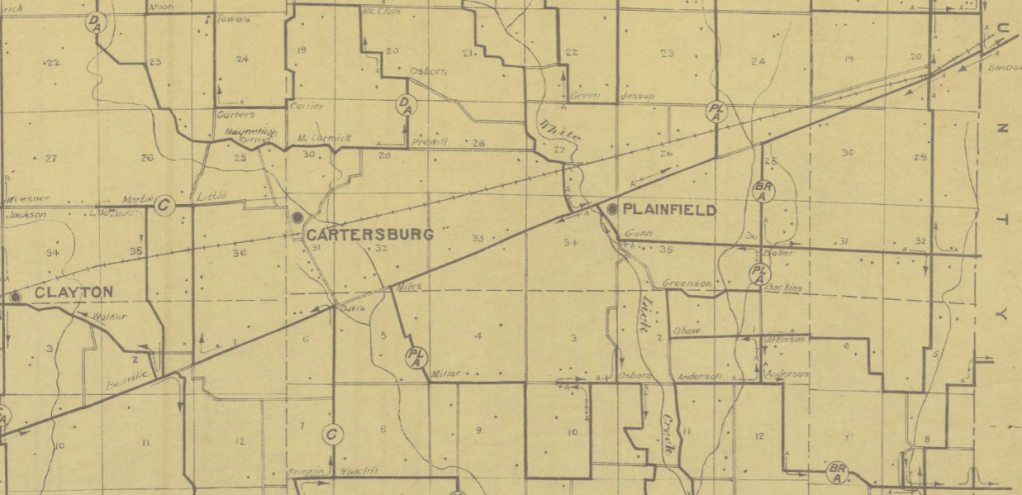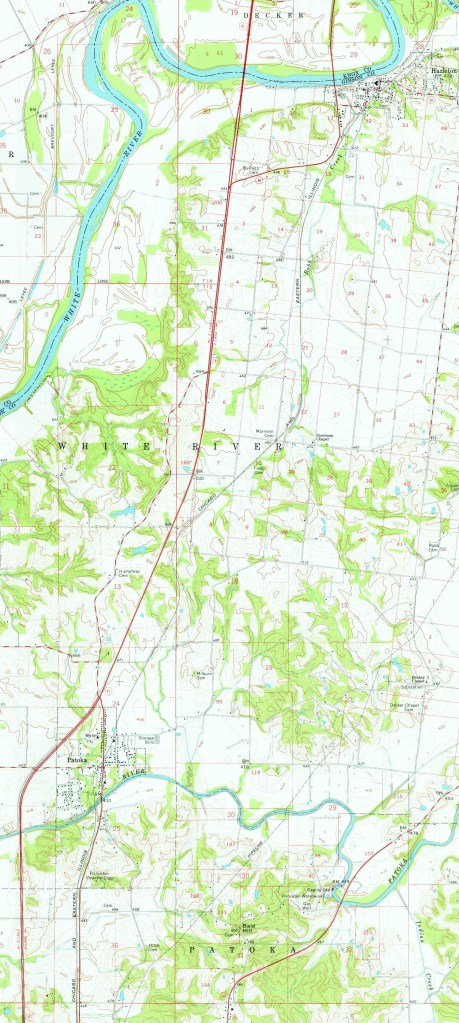When one looks at a railroad map of Indiana, especially ones like one of my favorites for this subject like this from 1898 (Railroad map of Indiana. | Library of Congress (loc.gov)), it is easy to see that the numerous railroad companies sprang up independently to connect the towns of Indiana. Unfortunately, the truth is never quite that simple. Today, I want to look at a railroad that had goals of being a rather long route, but ended up being bits and pieces of other larger companies: the Fort Wayne & Southern Railroad.
The mid-1800’s were a railroad building boom in the state of Indiana. Many companies were chartered to put down rails across the state. Some of these never came to be in their original form. Others were influenced by eastern companies with loans and bond purchases to allow construction. In a special act of 15 January 1846, the Indiana General Assembly chartered a railroad company that was to connect Fort Wayne to the Ohio River at Jeffersonville. Over the years, this would be a link in the railroad system that would make Fort Wayne a major railroad hub in northern Indiana.
Construction started slowly on the route. The plan was to build the road from Fort Wayne, through Bluffton, Hartford City, Muncie, New Castle, Rushville, Greensburg, Vernon and Charleston to finally end at Jeffersonville. The plan sounded rather extravagant, but it made sense in the grand scheme of things. Jeffersonville, being near the Falls of the Ohio, was a natural breakpoint in traffic transiting the Ohio River from Pittsburgh to the Mississippi. Ohio River traffic, at the time, had to stop at Jeffersonville, New Albany and Louisville to change from one barge to another. Building a railroad from the Falls of the Ohio to Fort Wayne allowed, it was thought, to funnel freight into Indiana’s second largest city. Ultimately, this, along with connections to Fort Wayne from Lake Michigan, Lake Erie, and points east (like Pittsburgh), would open the markets of the city, and towns along the railroads, to the entire nation.
Grading was started at two different places on the planned Fort Wayne & Southern. First, a route between Fort Wayne and Muncie. Second, the road was graded between Vernon and Jeffersonville. No rail had been put down on either of these sections. The company floundered as it tried to find funding for construction.
The question that comes up is, what happened to the company? No map ever showed a single company route that connected Fort Wayne and Jeffersonville, although such a route existed through the use of three different companies.
The Fort Wayne & Southern, like many railroads in Indiana, fell into receivership. The company found itself in a situation where they were still spending money on a route that wasn’t completed, in any section, enough to allow traffic to offset the losses. The entire route was sold at foreclosure on 19 January, 1866. But that sale was set aside, and the company continued to flounder until the route was conveyed to new owners on 7 November 1868.
But unlike other railroad companies in Indiana at the time, the Fort Wayne & Southern was broken into two different sections when it changed hands.
The section from Fort Wayne to Muncie, and then further to Rushville, would become a new railroad company, the Fort Wayne, Muncie & Cincinnati Railway. In June 1869, the former Fort Wayne & Southern between Muncie and Fort Wayne would merge with the Cincinnati, Connersville & Muncie to create the Fort Wayne, Muncie & Cincinnati Railroad Company. With the addition of rails to the route, this would connect Fort Wayne to Connersville. The FtWM&C Railway did not complete any construction before the merger with the CC&M. The railroad would open nearly 64 miles of track from Muncie to Fort Wayne in 1870.
The southern section, 53 miles of graded roadbed from Vernon to Jeffersonville, was conveyed to the Ohio & Mississippi Railway Company. That company was a consolidation of several companies that would build a railroad from St. Louis, Missouri, to Cincinnati, Ohio. This would create a branch to connect the company to another point on the Ohio River.
The complete route, from Fort Wayne to Jeffersonville, would ultimately be built…but not by one company. The 16 mile section from New Castle to Muncie would be opened in 1868 under the title Cincinnati, Connersville & Muncie Railroad. The next section, from New Castle to Rushville, would be completed in 1881 by the New Castle & Rushville Railroad. This route was 24 miles in length.
Another company that came into existence in 1879 would be the Vernon, Greensburg and Rushville. It would connect the title towns with rails opening in 1881.
All of the above would complete the original plan of the Fort Wayne & Southern. It would ultimately fall into three major railroad company systems. For a while, the section from Rushville to Fort Wayne would fall under the control of the New York Central system as the Lake Erie & Western, and later, the Nickel Plate. This would end when the New York Central sold its interest in that road. The Vernon, Greensburg & Rushville would be leased by what would become the Big Four Railway. The Big Four would later replace the Nickel Plate in the New York Central system.
The Ohio & Mississippi, after several consolidations, would become a leased company called the Baltimore & Ohio Southwestern Railroad. Although still legally a separate entity, in 1925 the management of the B&OSW was replaced by management of the Baltimore & Ohio.
Today, the entire route can be seen in the Hoosier landscape. The Baltimore & Ohio section would be abandoned piecemeal in the 1980s. 28 miles from North Vernon to Nabb was abandoned in 1980, and from Nabb to Charleston following in 1985. Two very short sections in Charleston were abandoned in 2000 and 2001.
The ultimate owners of the Nickel Plate, the Norfolk & Western, would attempt to abandon what was called the New Castle branch from New Castle to Rushville. Since it was withdrawn, there is no date of that attempt in my source. Ultimately, this would happen, however.
Parts of the route that was to be covered by the Fort Wayne & Southern are still in use today as parts of the Norfolk Southern and CSX. A map is available at the Library of Congress for the railroad at A section of Colton’s large map of Indiana with the Fort Wayne and Southern Rail Road marked upon it, as located also a map of the United States showing Road and its connections together with a profile of the Ohio river and lands adjoining and a section of the double track rail road tunnel under the Ohio river at Louisville, Kentucky & Jeffersonville, Indiana for the year 1855 ending Oct. 1, W. J. Holman, President and Chief Engr. | Library of Congress.

